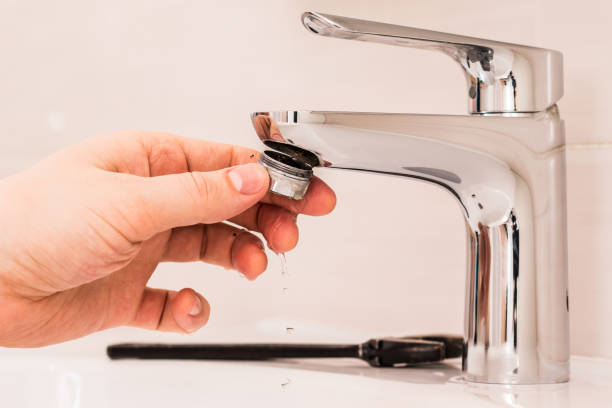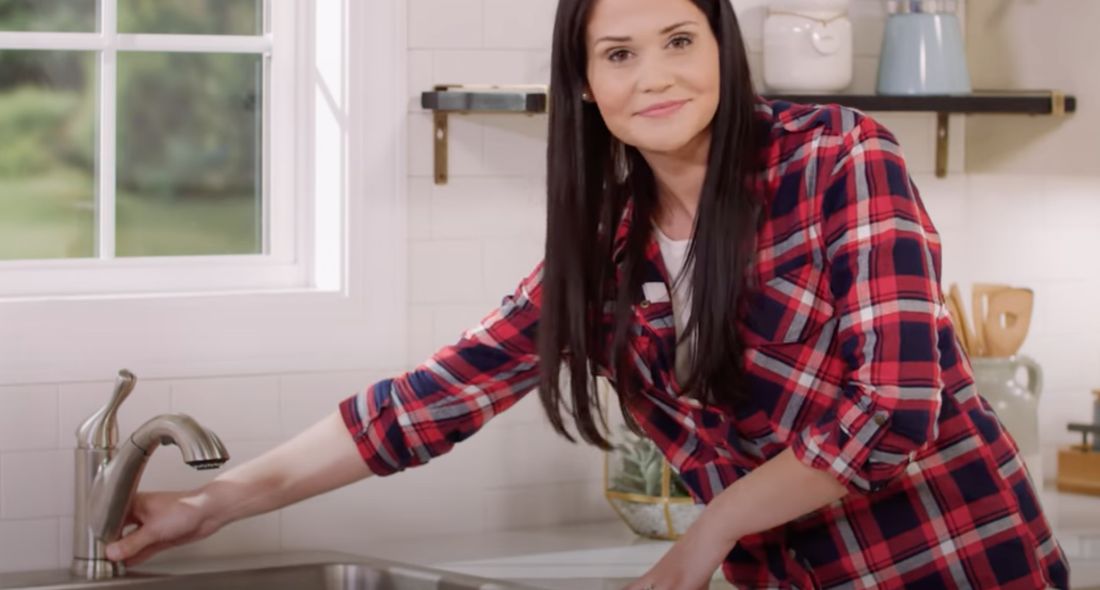How It's Significant to Fix a Faulty Faucet
How It's Significant to Fix a Faulty Faucet
Blog Article
Are you on the lookout for facts involving Why It's Important to Fix Leaky Faucets?

Trickling faucets may feel like a minor aggravation, but their effect surpasses just the inconvenience of the noise. From drainage to incurring unnecessary monetary expenses and wellness risks, disregarding a leaking tap can lead to different effects. In this write-up, we'll look into why it's crucial to resolve this common household problem promptly and properly.
Wastefulness of Water
Environmental Influence
Leaking faucets add considerably to water wastage. According to the Epa (EPA), a single faucet trickling at one drip per second can throw away more than 3,000 gallons of water each year. This not only stress water sources but likewise influences communities and wild animals dependent on them.
Financial Costs
Boosted Water Expenses
Past the ecological influence, dripping faucets can pump up water expenses considerably. The accumulated wastage in time equates into higher utility expenditures, which can have been stayed clear of with prompt fixings.
Possible Home Damage
Furthermore, prolonged dripping can lead to harm to fixtures and surface areas bordering the faucet. Water accumulation can create discoloration, rust, and even architectural problems if left unattended, leading to extra repair service prices.
Health Issues
Mold and Mildew Growth
The constant presence of moisture from a dripping tap develops an ideal setting for mold and mildew and mold development. These fungis not only compromise interior air top quality however also pose wellness threats, especially for individuals with respiratory system problems or allergic reactions.
Waterborne Diseases
Stationary water in leaking faucets can become a breeding place for microorganisms and various other virus, boosting the risk of waterborne diseases. Impurities such as Legionella bacteria flourish in stagnant water, possibly resulting in major health problems when consumed or inhaled.
DIY vs. Expert Repair service
Pros and Cons of Do It Yourself Fixing
While some might attempt to repair a dripping tap themselves, DIY repair work come with their very own set of difficulties. Without proper expertise and tools, DIY efforts can intensify the concern or cause incomplete repair services, prolonging the trouble.
Benefits of Working With an Expert Plumber
Working with a professional plumber makes certain that the underlying reason for the trickling tap is dealt with properly. Plumbings have the proficiency and devices to detect and fix faucet concerns successfully, saving time and reducing the danger of additional damages.
Step-by-Step Overview to Dealing With a Dripping Tap
Devices Called for
Prior to trying to take care of a leaking faucet, collect the necessary devices, including a flexible wrench, screwdrivers, replacement parts (such as washing machines or cartridges), and plumber's tape.
Typical Tap Issues and Their Solutions
Identify the kind of tap and the particular concern causing the drip. Usual problems consist of damaged washers, corroded shutoff seats, or damaged O-rings. Refer to producer guidelines or online tutorials for step-by-step assistance on fixings.
Safety nets
Routine Upkeep Tips
To stop trickling taps, perform routine maintenance such as cleaning aerators, examining for leaks, and replacing worn-out parts without delay. Additionally, consider mounting water-saving gadgets or updating to much more efficient components.
Significance of Prompt Repair Works
Dealing with trickling faucets as quickly as they're observed avoids further water wastefulness and possible damage, ultimately saving both water and cash in the future.
Effect On Residential Property Value
Perception of Well-Maintained Building
Preserving a home in good condition, including attending to maintenance problems like dripping faucets, boosts its perceived value and charm amongst potential purchasers or tenants.
Influence on Resale Worth
Characteristics with properly maintained plumbing fixtures, including taps, command greater resale worths in the real estate market. Attending to trickling faucets can contribute to a positive perception throughout building inspections and negotiations.
Environmental Obligation
Private Contribution to Conservation
Taking obligation for dealing with trickling taps lines up with wider efforts toward water conservation and environmental sustainability. Every person's activities jointly make a considerable effect on preserving precious sources.
Lasting Living Practices
By focusing on timely repairs and taking on water-saving routines, individuals contribute to lasting living practices that profit both existing and future generations.
Conclusion
Resolving a leaking faucet exceeds simple convenience; it's a crucial step towards conserving water, lowering financial prices, and protecting wellness and residential or commercial property. Whether via DIY repair services or professional support, doing something about it to fix trickling taps is a small yet impactful method to advertise liable stewardship of resources and contribute to a healthier, extra sustainable future.
How to Fix a Leaky Faucet: Step-by-Step Repair Guide
A leaky faucet may seem like a simple annoyance, but if it's not fixed promptly, that leak could cost hundreds to potentially thousands. From water damage to mold, mildew, and high water bills, even a tiny leak can be catastrophic if left unattended. Damage like this can even affect the overall value of your home, so it's important to take the right approach for leaky faucet repair. You may need the help of a plumber in some cases, but we've got a few tips you can try on how to fix a leaky faucet before calling the pros.
Four Faucet Types
When you're learning how to fix a leaky faucet, the first step is knowing what kind of faucet you're working with! There are four common types.
Cartridge Faucets
Cartridge faucets come in one- or two-handled varieties. In one-handled cartridge faucets, hot and cold water combines in a single cartridge. In the two-handled versions, hot and cold water are controlled separately and mixed in the faucet.
Ball Faucets
Ball faucets have a single lever you push up and down to adjust the pressure and rotate to change the temperature. A slotted metal ball controls the amount of water allowed into the spout.
Compression Washer Faucets
They're the oldest type of faucet, but they're still used in many homes — especially older ones. Compression faucets have two separate handles that, when turned, raise or lower the washer that seals a water valve. This valve stops water from flowing through the faucet when it is turned off.
Disc Faucets
Disc faucets rarely need to be repaired due to their maintenance-free design. The water flow is controlled by two discs — the upper one raises and lowers against a fixed lower disc, creating a watertight seal. If your disc faucet starts leaking, you may need to replace the seals or clean residue buildup from the inlets.
Fixing a Leaky Faucet
Step 1: Turn Off the Water
Whether you're learning how to fix a leaky bathtub faucet or how to fix a leaky kitchen faucet, always turn off the water supply to your working area when you're fixing a leak. The last thing you want is a flood added to your list of things to fix.
Look for the shutoff valves below your sink or around the tub and turn them clockwise to stop the water flow. If your faucet doesn't have shutoff valves, you may need to turn off the water for the whole house. Check to make sure it's off by turning the faucet on. If nothing comes out, you're ready to start the repair.
Step 2: Take Apart the Faucet
How you disassemble your faucet depends on the type of fixture you have. You can use a flathead screwdriver to remove the caps on top of the handle or handles for cartridge and compression faucets. Inside, you should see handle screws. Unscrew these with a screwdriver to remove the handle.
Disc- and ball-style faucets will typically have an inlet screw near the handle, and removing that will reveal the interior of the faucet.
Detach the Valve Stem
For cartridge- and compression-style faucets, you'll see the inner valve stem or cartridge once you remove the faucet handles. If you have a compression faucet, unscrew the brass valve stem. If you have a cartridge faucet, pull out the cartridge. If your cartridge has been in place for a while, it may require some tools or extra force to remove it due to mineral deposits.
Examine and Replace Parts
Once you've removed the parts, check them out to confirm what needs to be replaced. You may see corroded rubber washers, O-rings, stems, or cartridges. On a ball-style faucet, check the seats and springs for damage.
If you need to repair a leaky disc faucet, check the inlet and seals on the lower disc.
Once you determine what parts must be replaced, visit your local hardware store. Bring the damaged parts with you to ensure you can purchase the correct components to replace them.
Clean Valves and Faucet Cavity
If you've removed a stem or cartridge, you may notice mineral buildup in the faucet's threads. Use white vinegar to clean the valve seat by soaking it for a few minutes, then scrub it away with a soft toothbrush and rinse with warm water. You can also clean the interior of the faucet in the same way.
Reassemble the Faucet
Once your faucet is cleaned and the required parts have been replaced, it's time to reassemble it. Put the pieces back together and slowly turn the water supply back on. Doing this slowly is crucial because too much initial water pressure can damage the new hardware you've just installed.
https://homewarranty.firstam.com/blog/how-to-fix-leaky-faucet

Do you enjoy reading about Water Dripping from Faucet: Why and How to Fix? Create a short review further down. We would be delighted to hear your views about this blog. Hoping that you come back again in the future. Sharing is nice. You never know, you may very well be helping someone out. I value reading our article about Why Are My Faucets Dripping (And Can I Fix It Myself)?.
Report this page